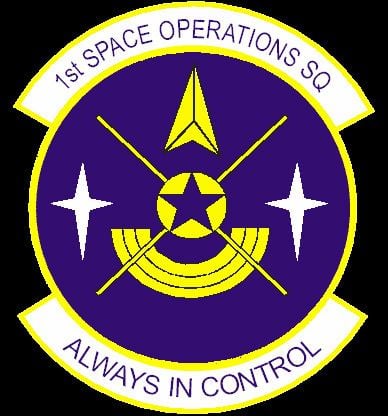Country United States Part of AFSPC/50th Space Wing | Type Space Operations | |
 | ||
Active 1961-1976, 1987-Present Branch United States Air Force Role On-orbit Command and Control | ||
The United States Air Force's 1st Space Operations Squadron (1 SOPS) is a space operations unit located at Schriever AFB, Colorado. The squadron is also responsible for performance launch, on-orbit, emergency, end-of-life testing and disposal operations providing warning, navigation, R&D, surveillance and weather to the president and the Secretary of Defense, Joint Chiefs of Staff and nine combatant commanders worldwide.
Contents
Mission
1 SOPS conducts command and control (C2) for four distinct constellations: Defense Support Program (DSP), Midcourse Space Experiment (MSX) and a NASA research and development (NASA R&D) program, in low earth to deep space orbits, and is Air Force Space Command's only multi-mission Satellite Operations Control Center. 1 SOPS is supported by the Air Force Reserves unit, the 7th Space Operations Squadron.
The squadron operates and maintains 24-hour Air Force Satellite Control Network command and control capability for Defense Support Program and Midcourse Space Experiment constellations. 1st SOPS also operates and maintains a research and development space system providing vital space weather data worldwide.
1st SOPS performs launch and early-orbit operations for GPS and DSP systems including satellite activation, initial checkout and transfer to mission orbit. 1st SOPS plans and executes tracking, telemetry and commanding functions for GPS, DSP, MXS and a NASA R&D satellite to maintain spacecraft state-of-health, sustain on-orbit operations and accomplish mission taskings. They respond to all satellite emergencies, and support end-of-life testing and disposal operations for GPS, DSP and MSX and R&D spacecraft as required.
The squadron maintains DSP spacecraft positional knowledge and distributes data to worldwide users. 1st SOPS also completes 100 percent of MSX and R&D training and evaluation.
The Multi-Mission Space Operations Center (MMSOC) is a revolutionary approach to space operations—an operations center focused on forging a one-of-a-kind operations/acquisition team to demonstrate and field emerging space missions and satellite C2 technologies in a rapid, decisive manner. The MMSOC is structured to operate a variety of satellite missions, including satellite initiatives without a program office, satellite missions of small scale (small constellations), new missions transitioning from concept toward full-scale operations, and all research, development, test and evaluation satellites with operational utility remaining after test and evaluation are complete.
Mission control crew shifts conduct 24-hour operations supporting the three major functions of satellite control; telemetry, tracking and commanding. Orbital analysts and program engineers provide program specific knowledge and support to the crews. The operators perform pre-contact planning, real time contact and post-contact evaluation. The squadron conducts more than 2,000 contacts a month.
History
1 SOPS was originally activated February 14, 1961, as the 1st Aerospace Control Squadron, which was in operation until April 1976. On October 5, 1987, the squadron was reactivated, renamed the 1st Satellite Control Squadron, and began its ever-growing satellite control mission. On February 16, 1988, the squadron began its first commanding on the DSP constellation.
The Space Operations Center (SOC) was operationally turned over to AFSPC on December 21, 1989. The SOC increased its mission on February 20, 1990, when the Defense Meteorological Satellite Program mission was operationally turned over. In May 1996, satellite command authority for the first research and development satellite controlled by AFSPC, Technology for Autonomous Operational Survivability, was given to 1st SOPS.
On December 4, 1998, the squadron assumed command and control capability on the Midcourse Space Experiment, which became an operational program on October 1, 2000, with the first-ever transfer of operations from the Ballistic Missile Defense Organization to AFSPC.
Operated Space Detection and Tracking System Center, tracking and cataloging man-made objects in space, 1961-1976. Satellite command and control for the NAVSTAR Global Positioning System, the Defense Meteorological Satellite Program, and the Defense Support Program, 1987-.
Emblem
On a disc Azure, three bars arched to base Or, superimposed at fess point by a stylized satellite of the like charged with a mullet of the first between in fess two polestars and pointing to chief a flight symbol at honor point all Argent.
Previous designations
(The organizations listed below tracked all satellites, carrier rockets, debris, and space probes, controlling a global network of ground sensors. They did not perform on-orbit command and control of satellites. They were the operational version of research and development Project Space Track. Part of the USAF Air Defense Command at Ent AFB, they were the Spacetrack component of NORAD's Space Detection and Tracking System SPADATS. 1st Aero achieved full operational status in early July 1961. At Vandenberg AFB, the United States Space Surveillance Network (SPACETRACK), currently performs these satellite tracking functions.)
